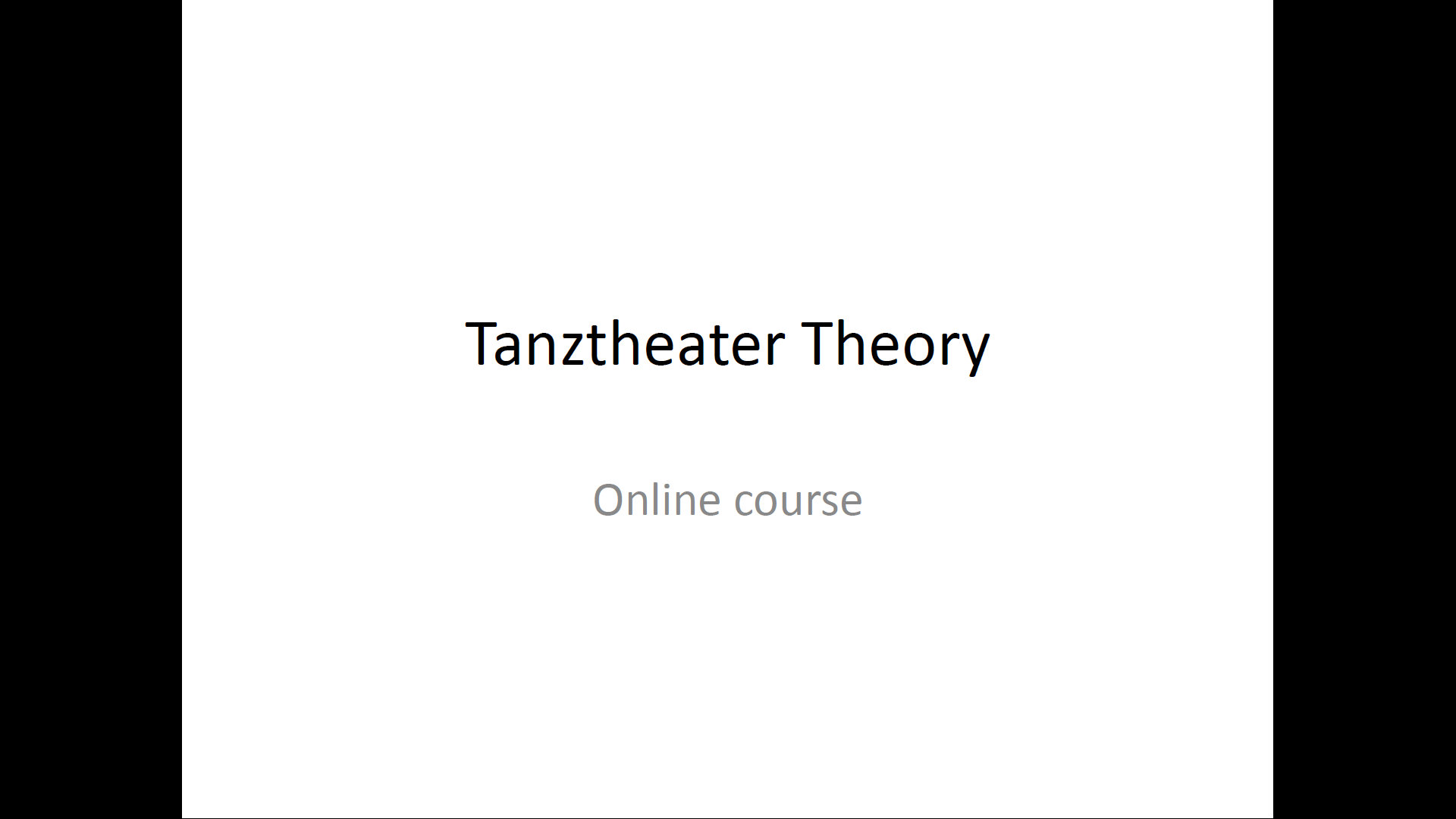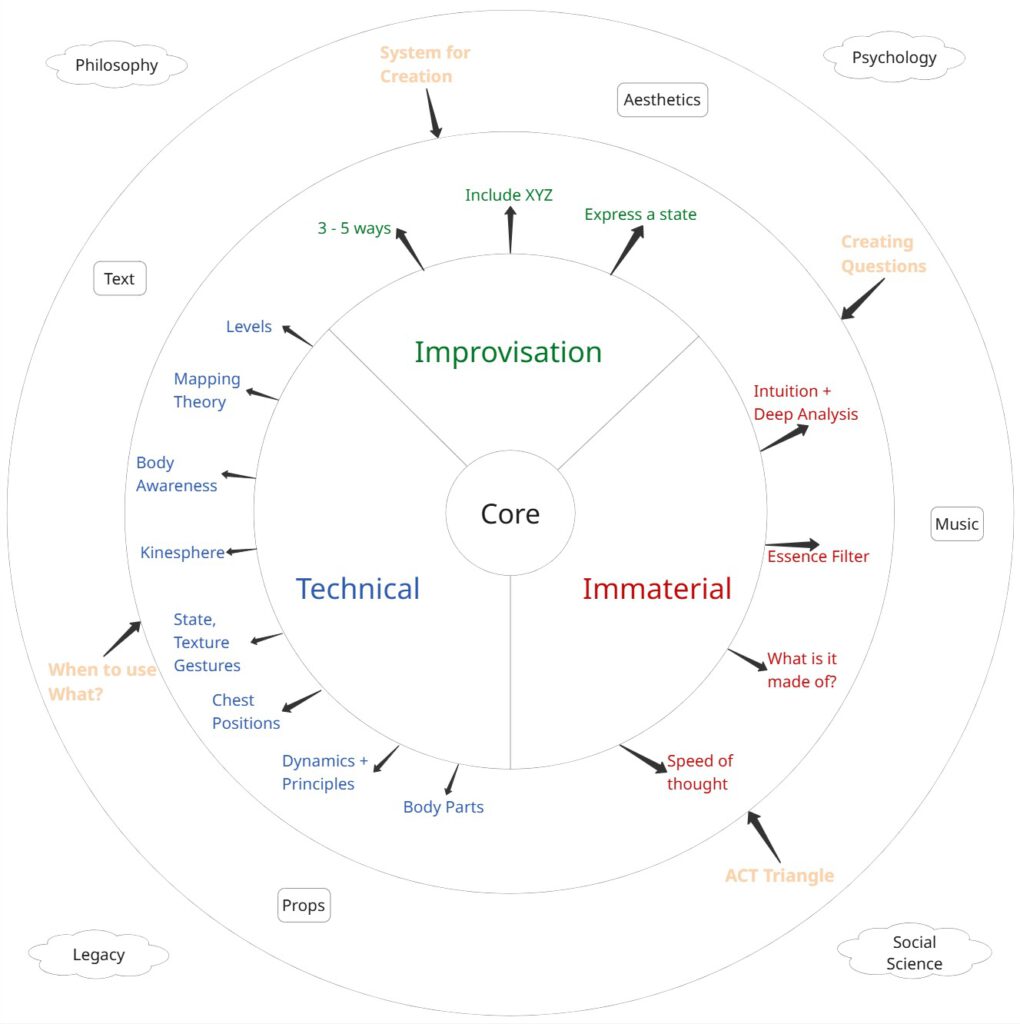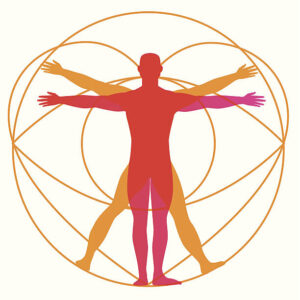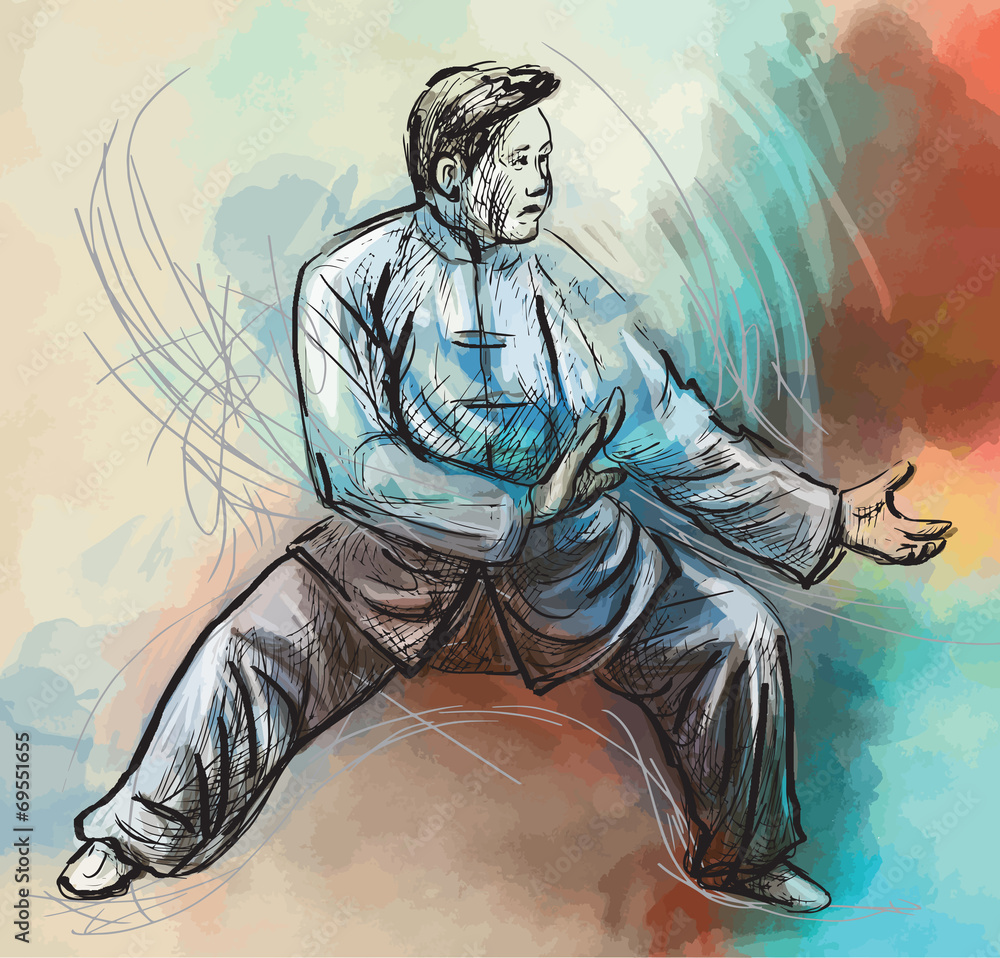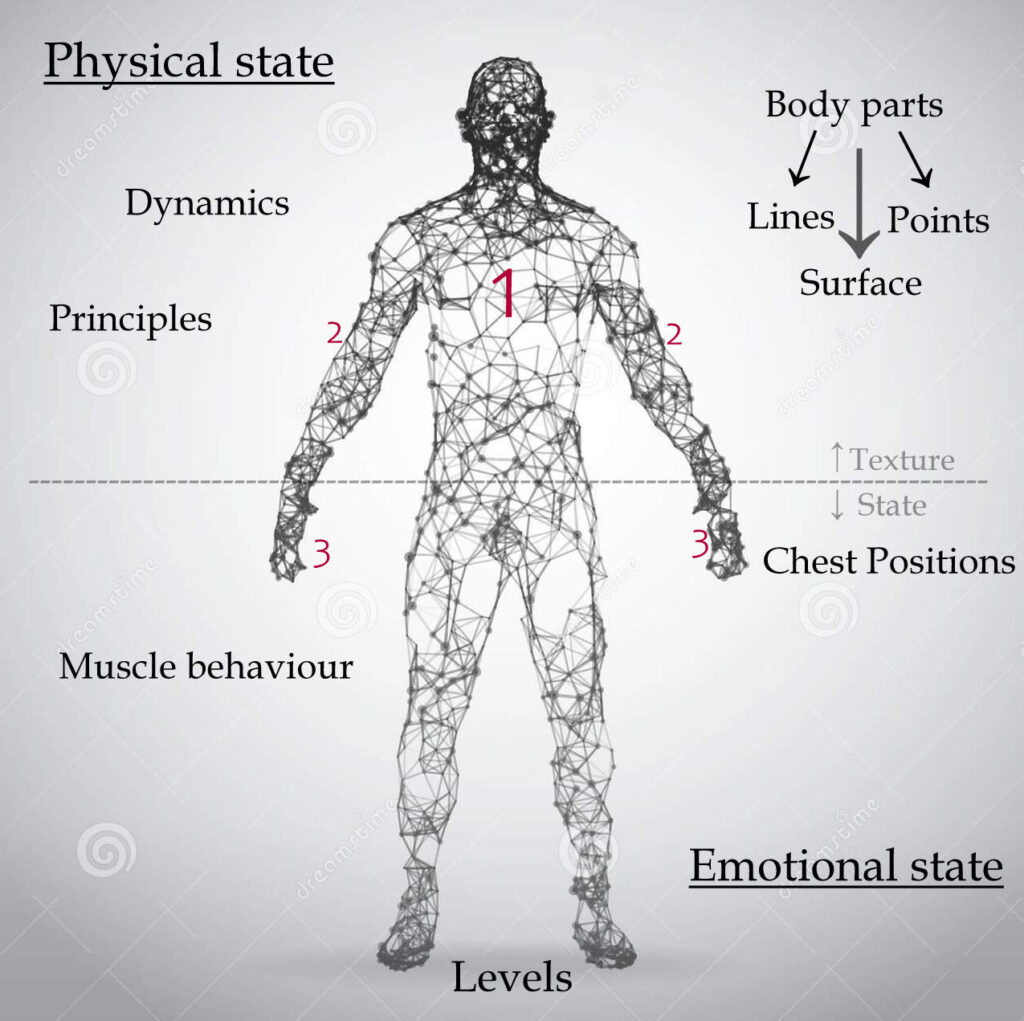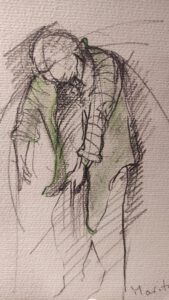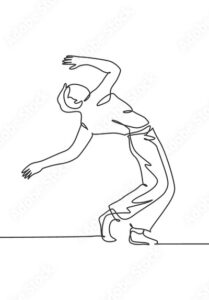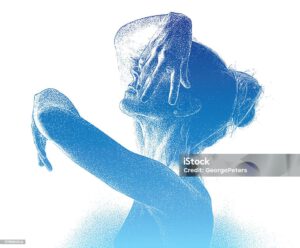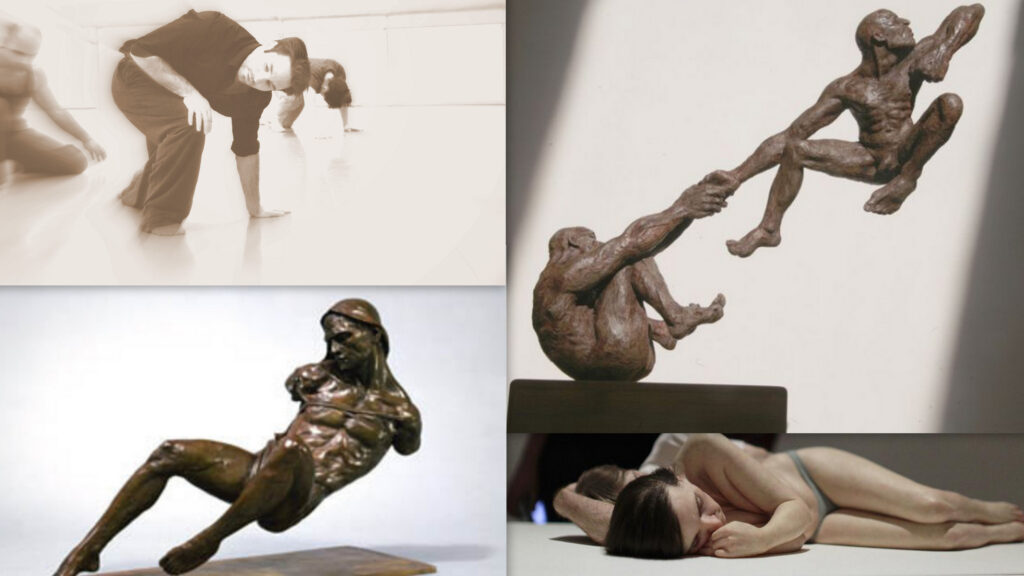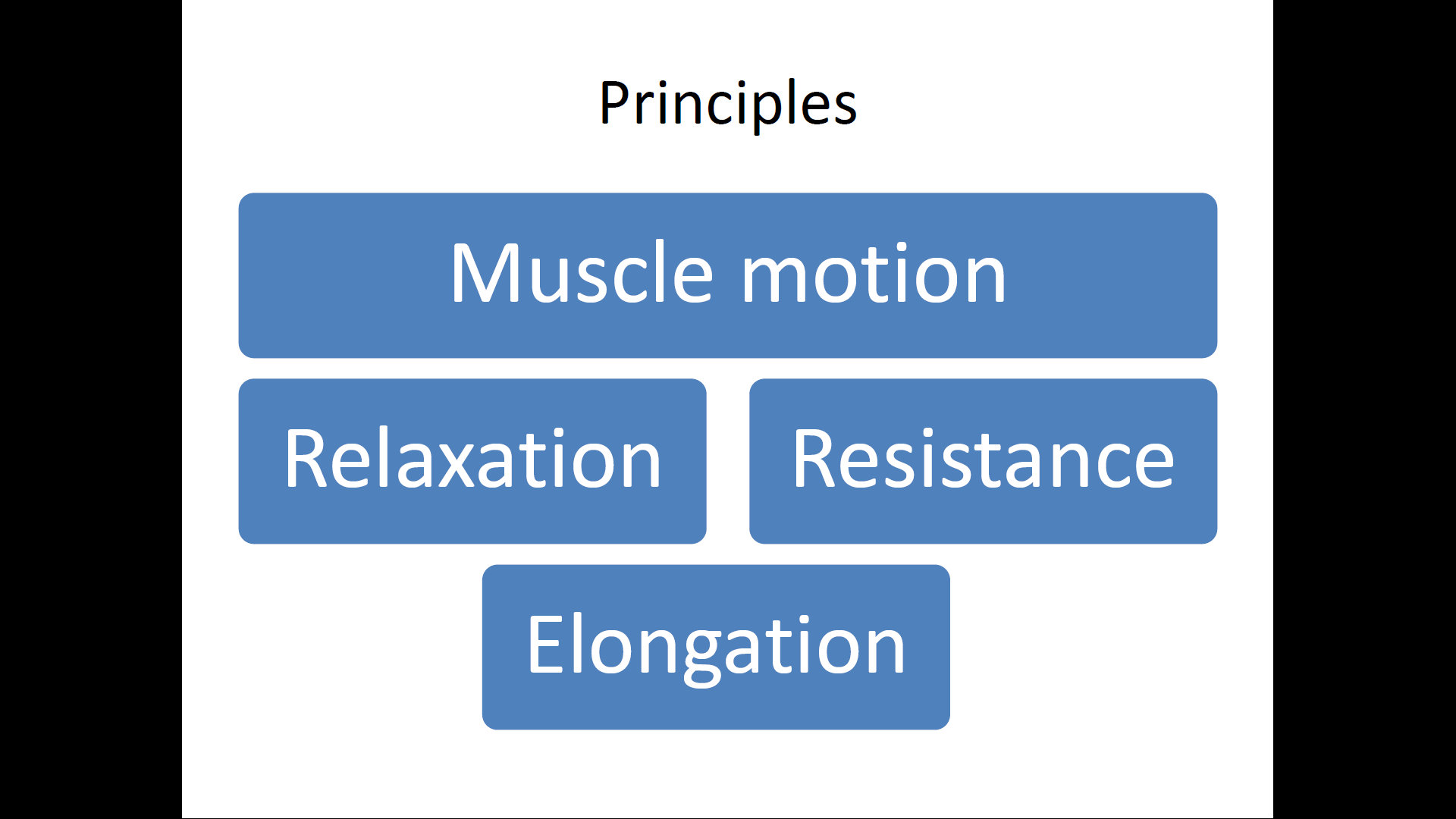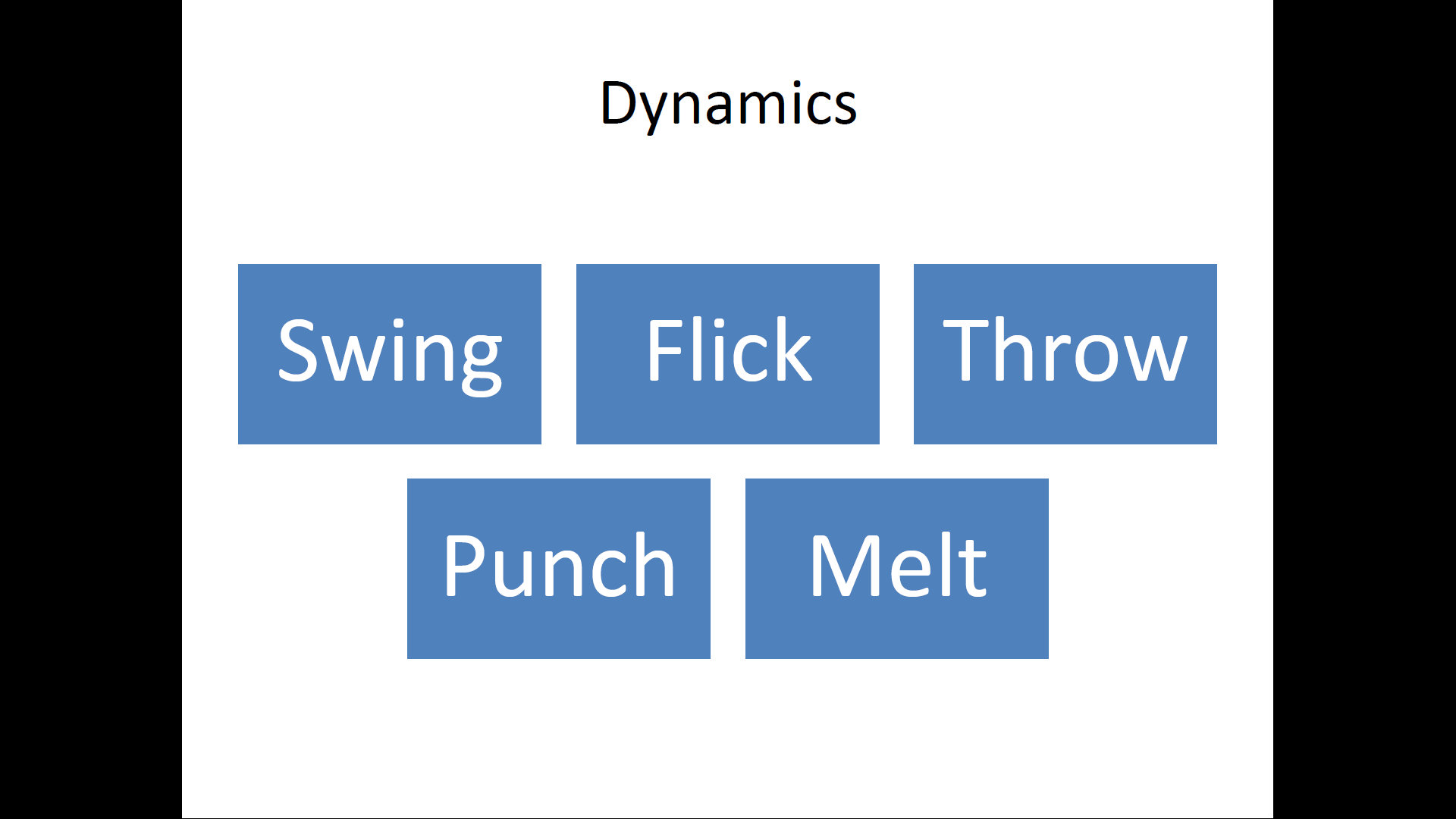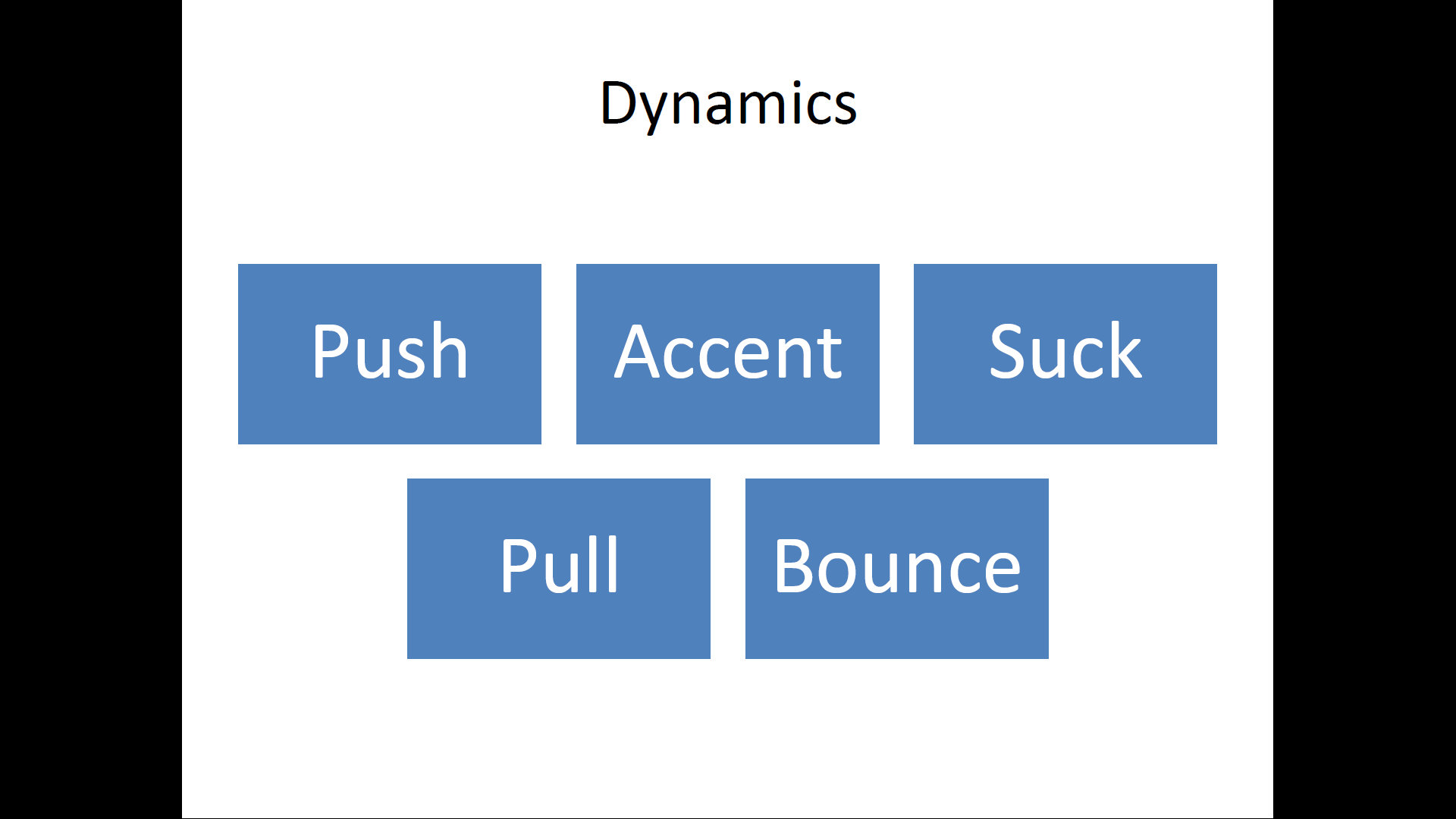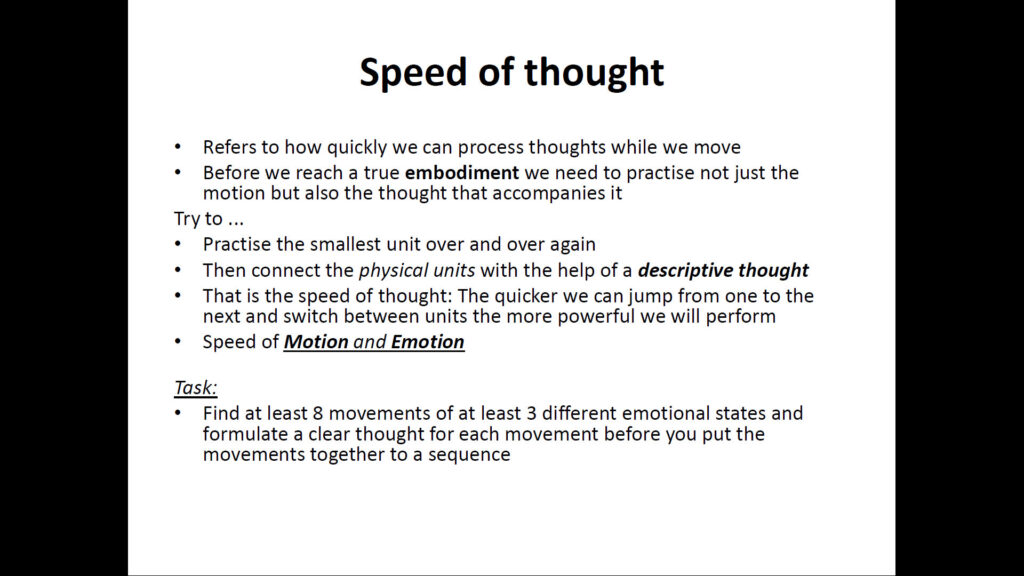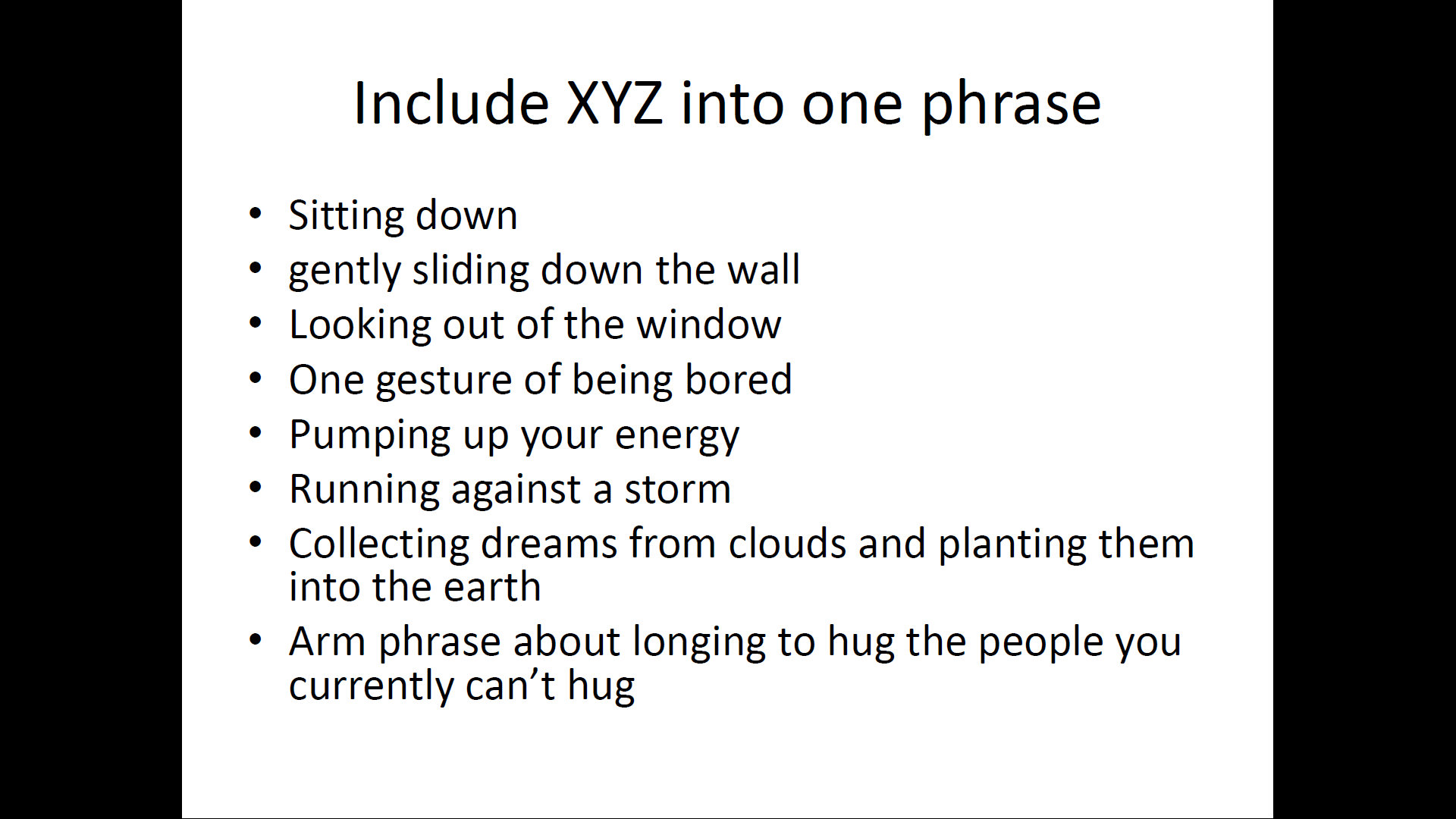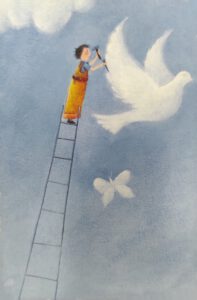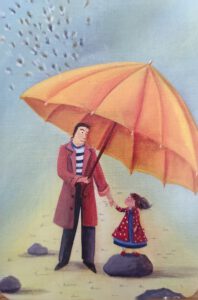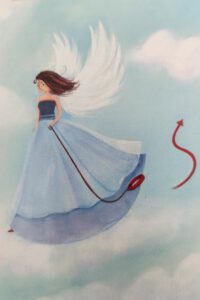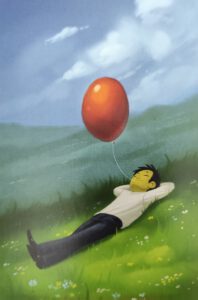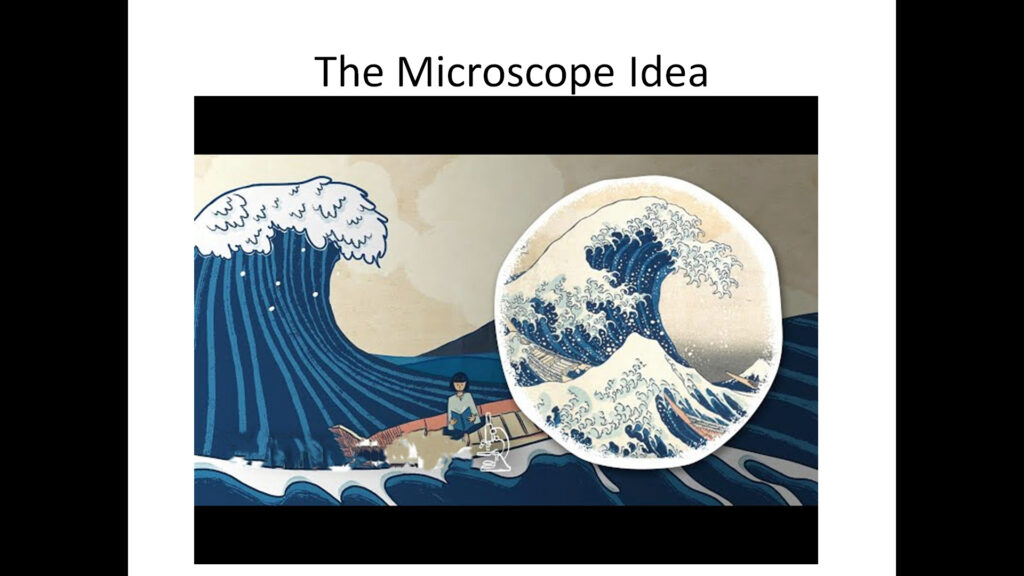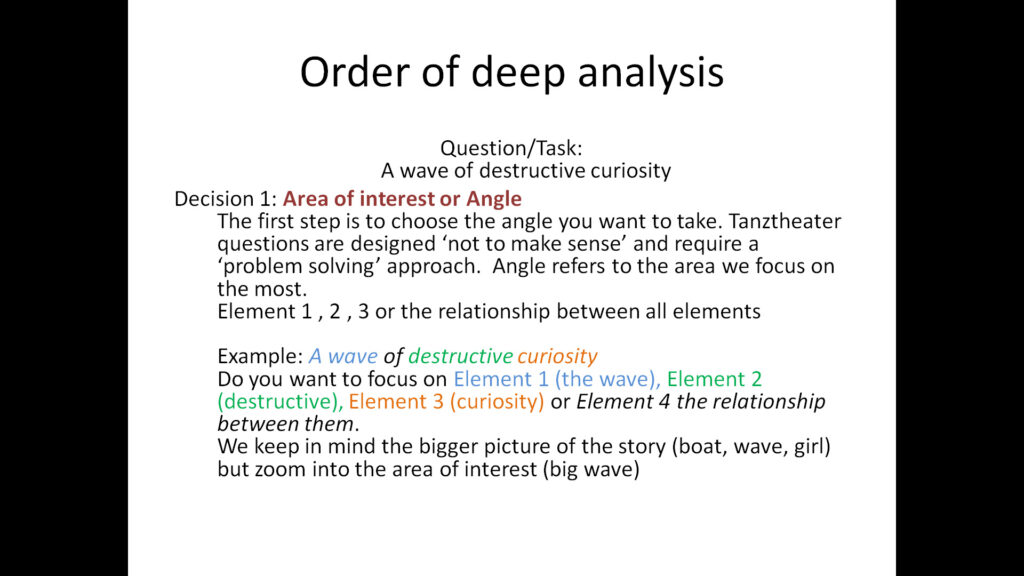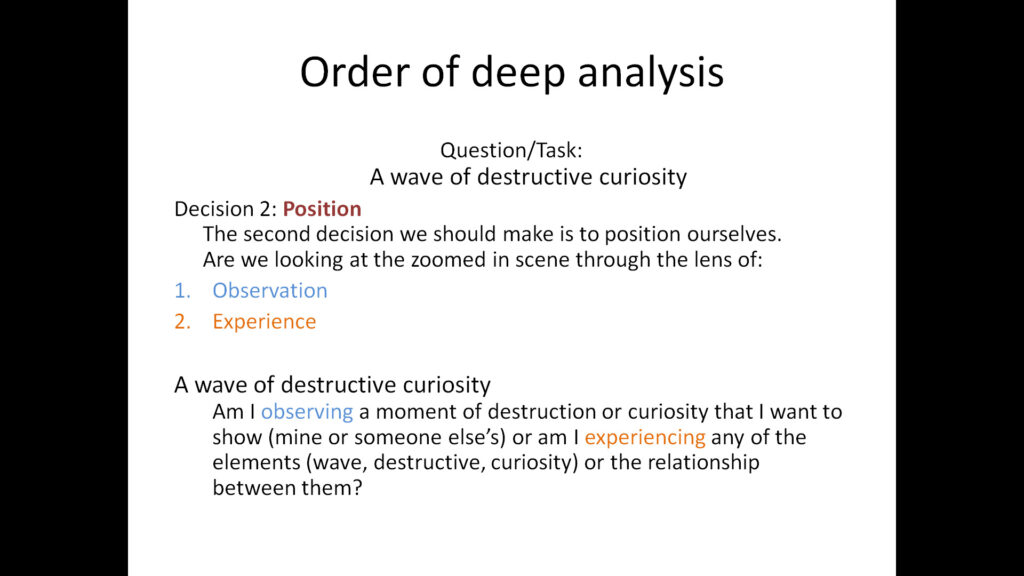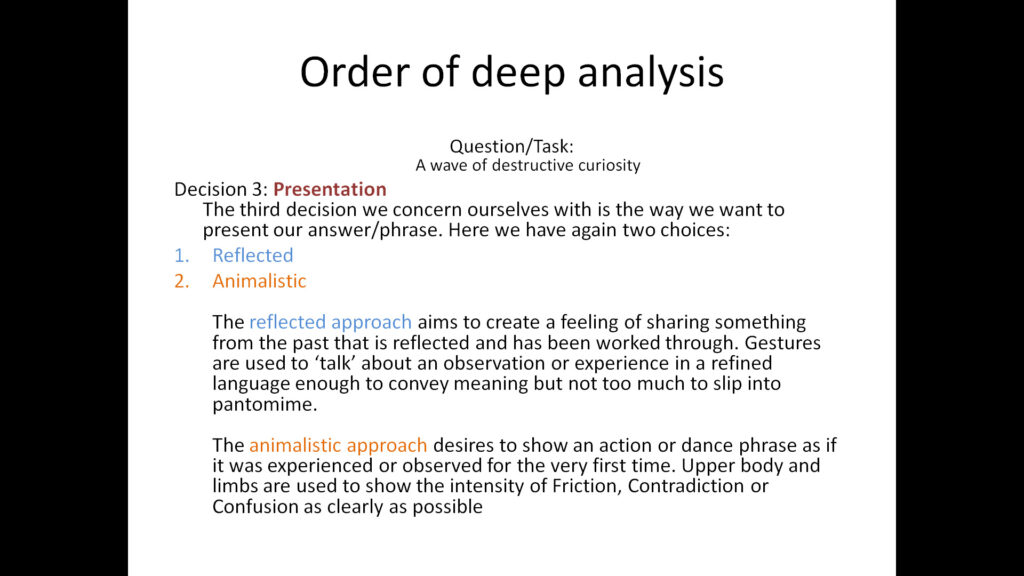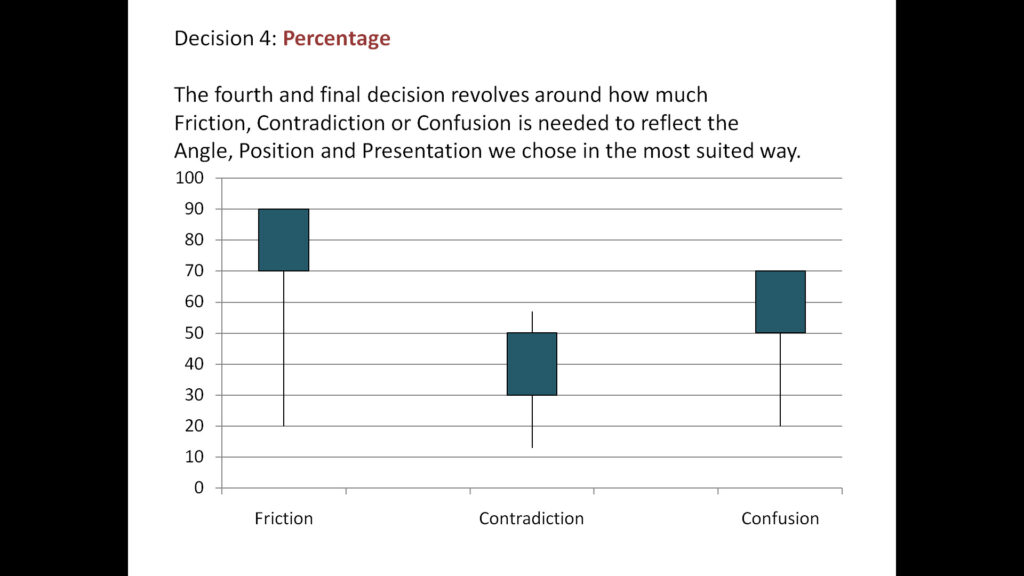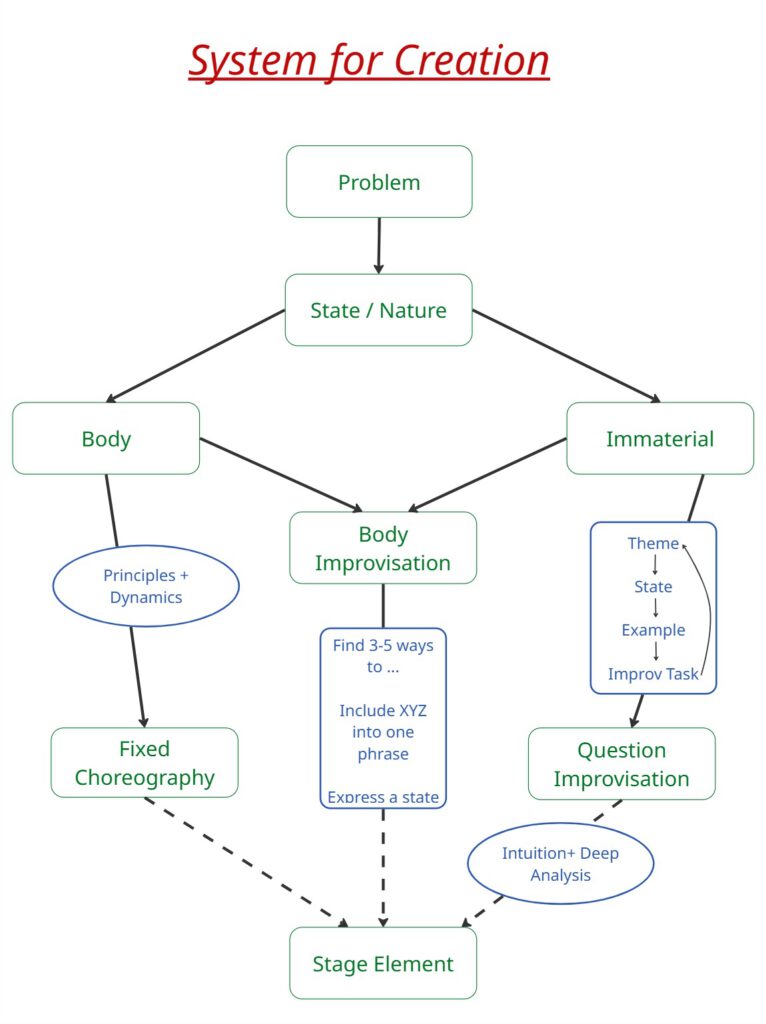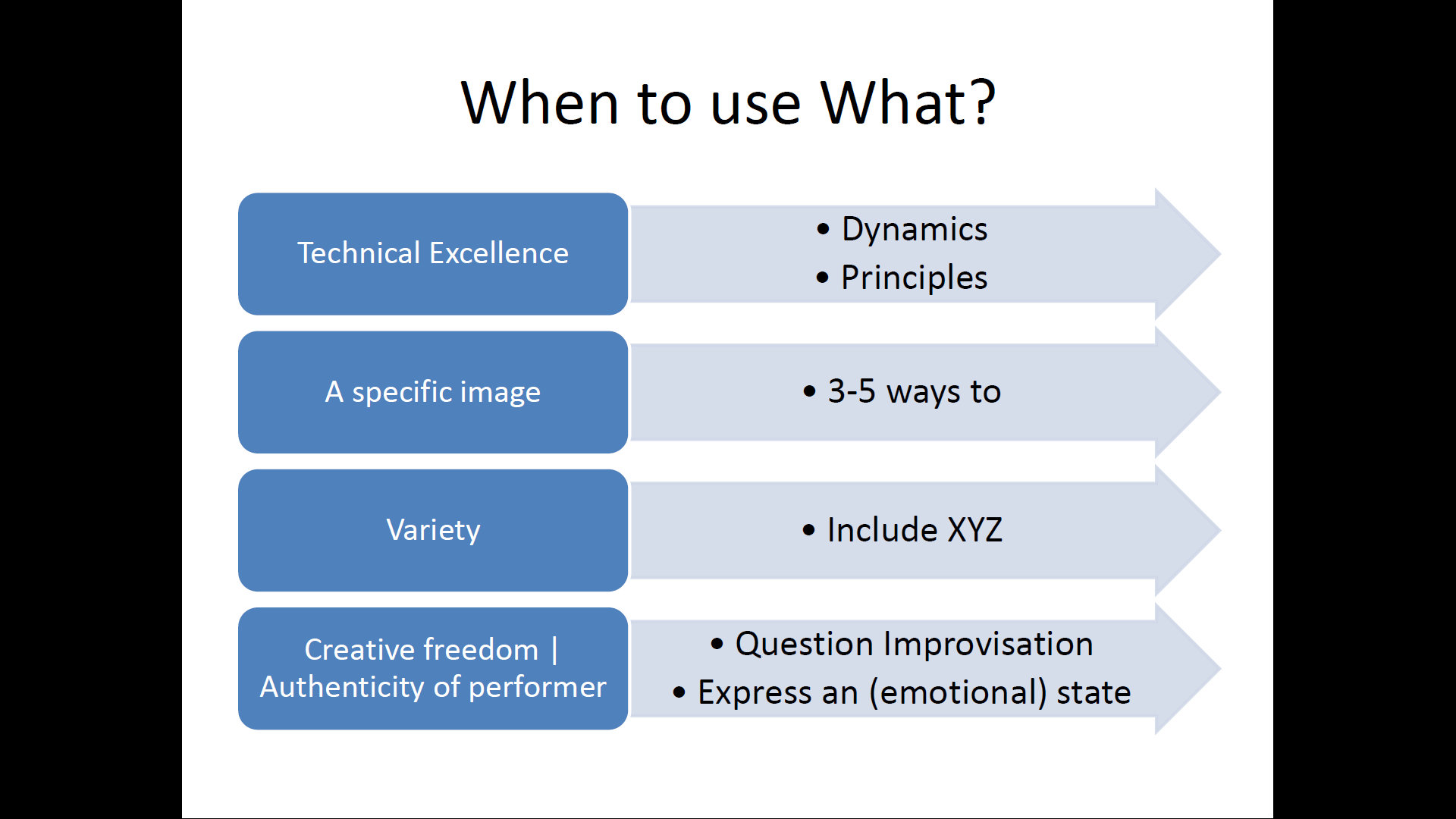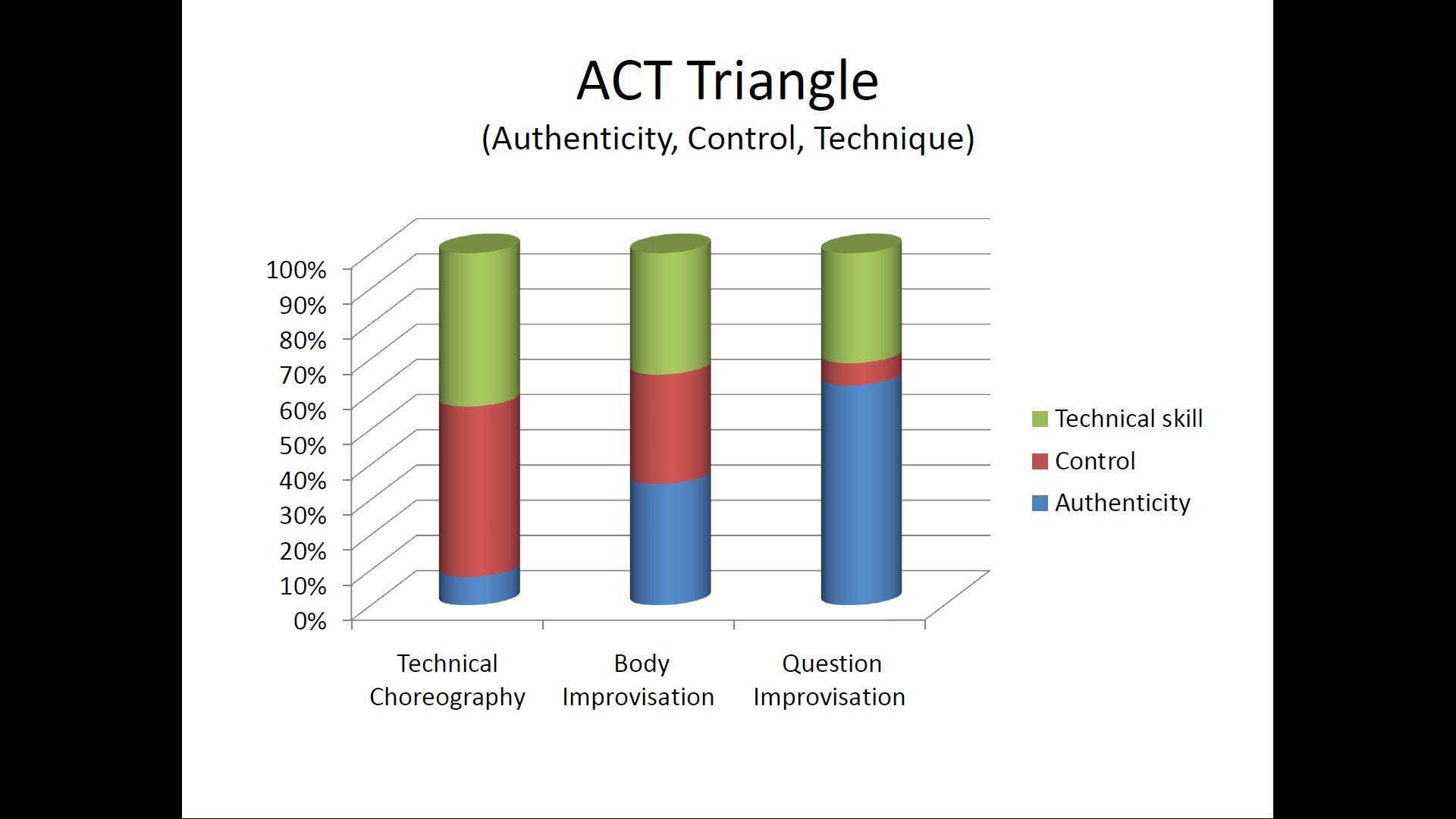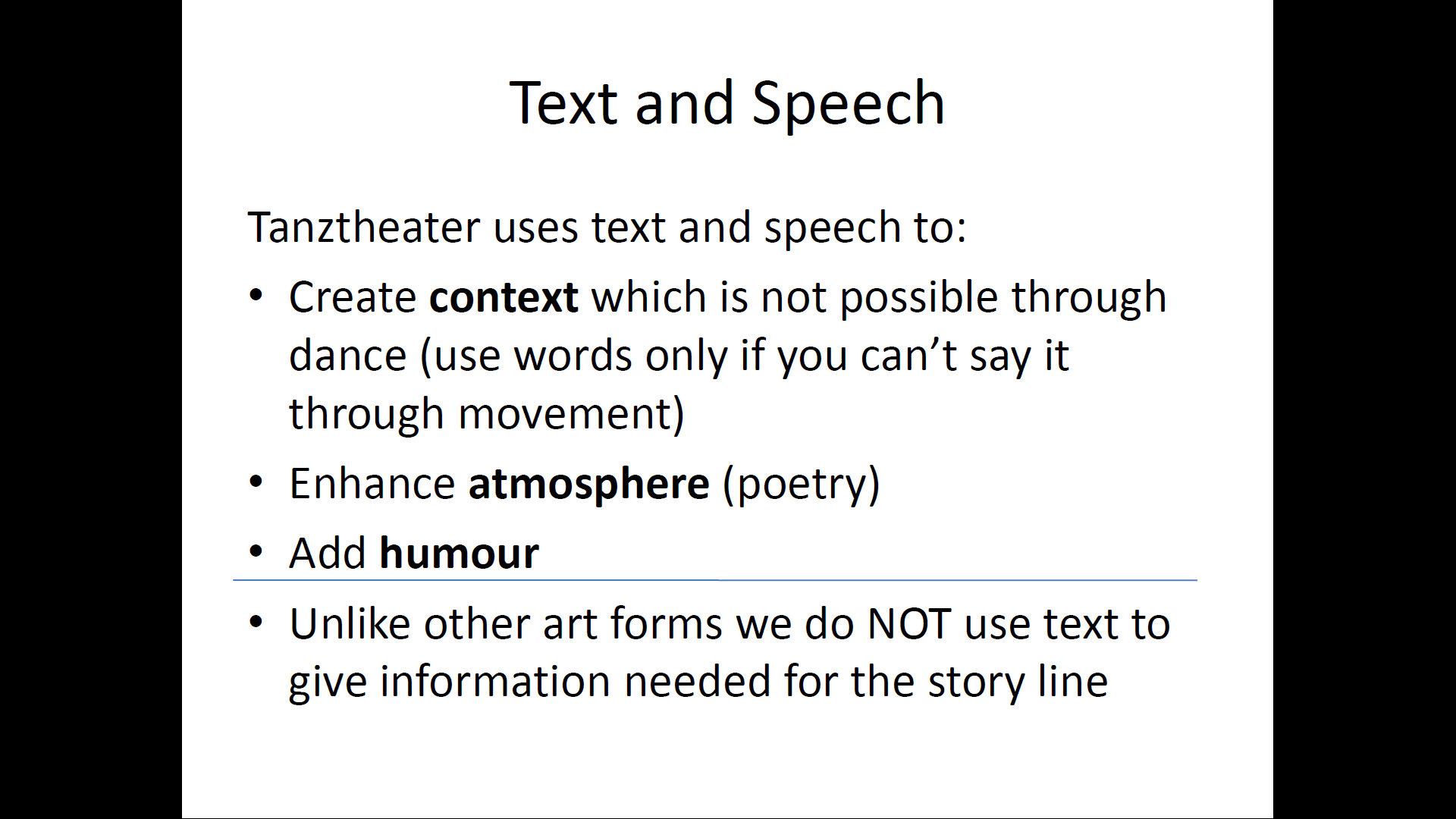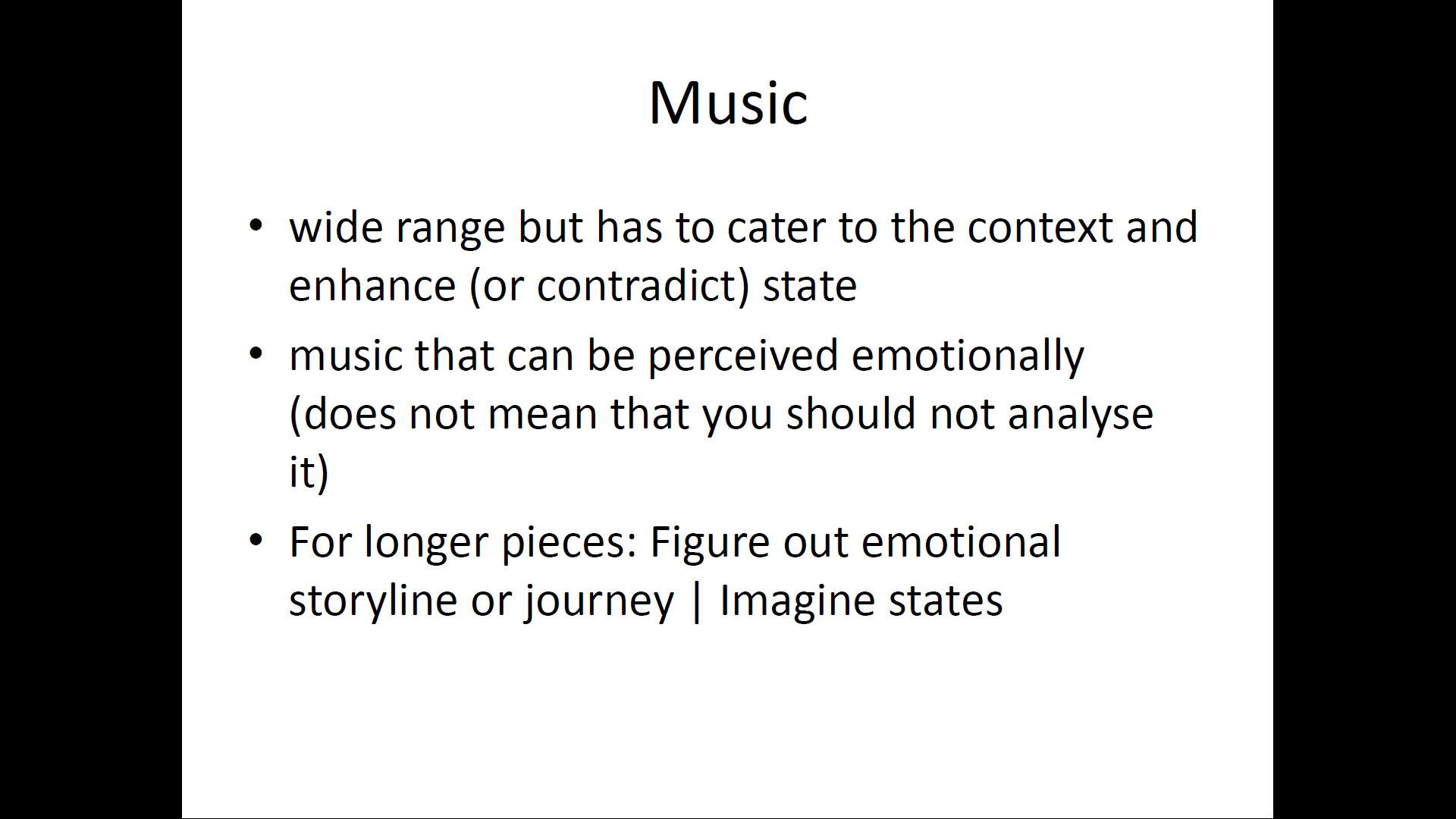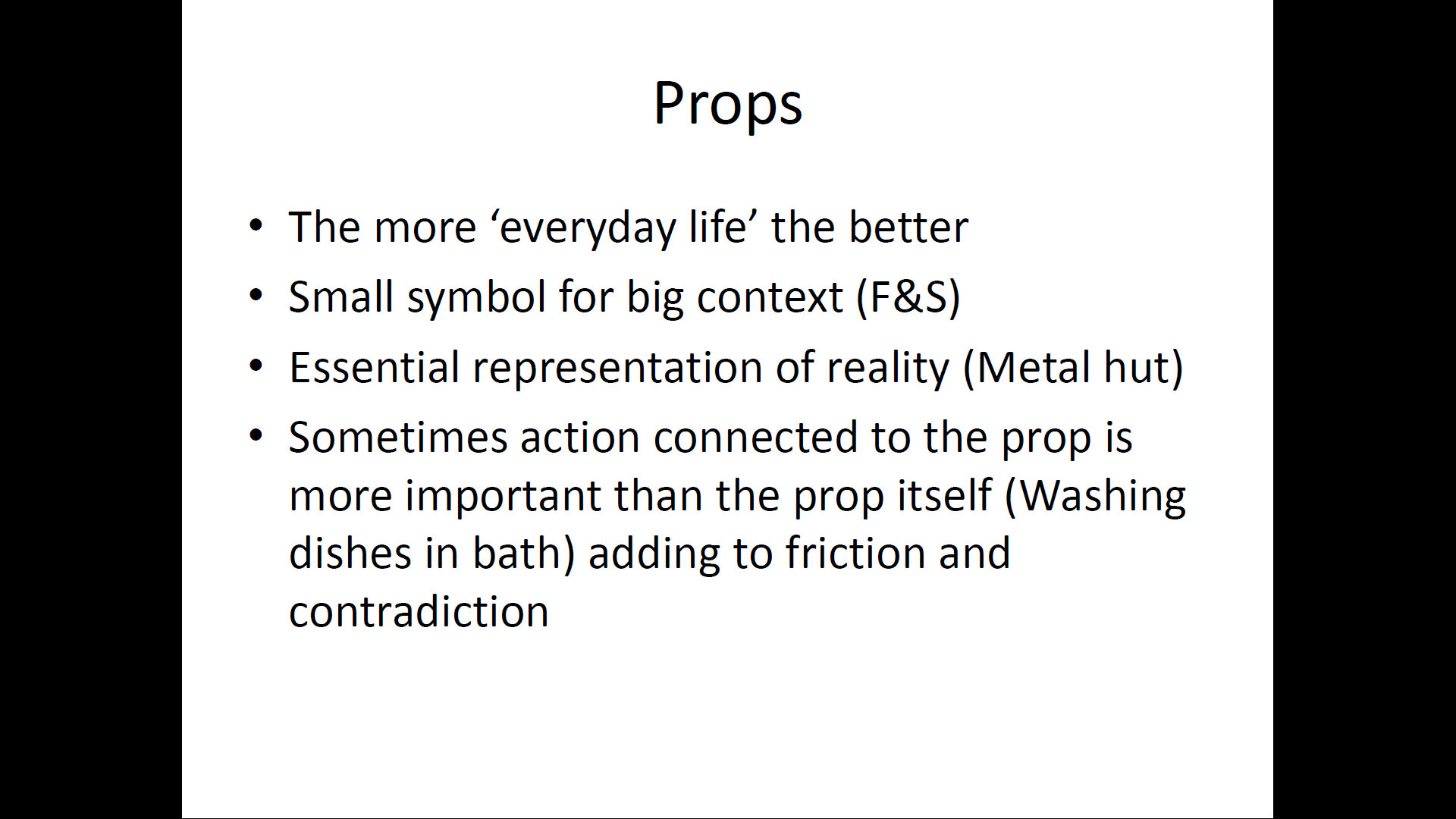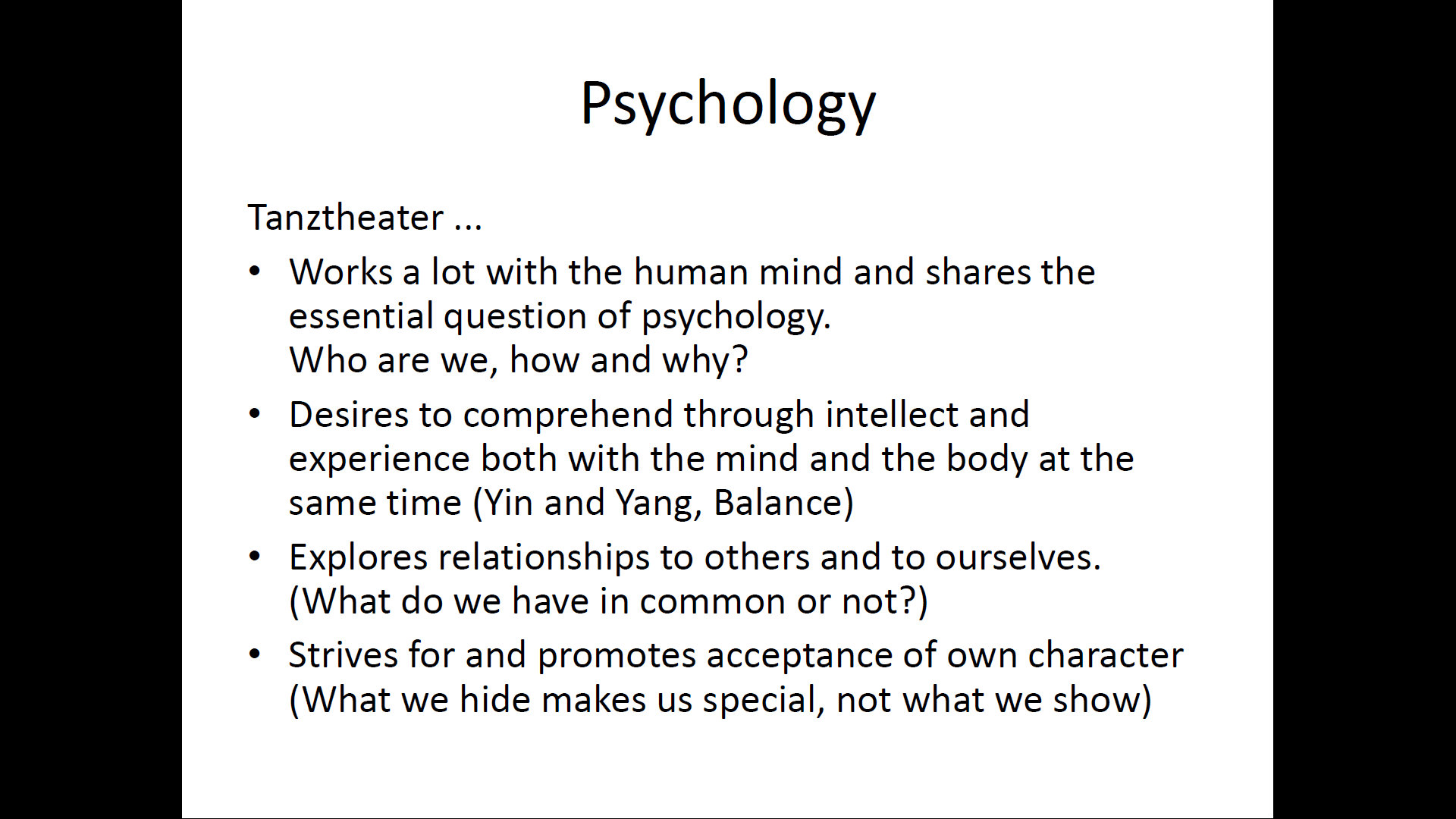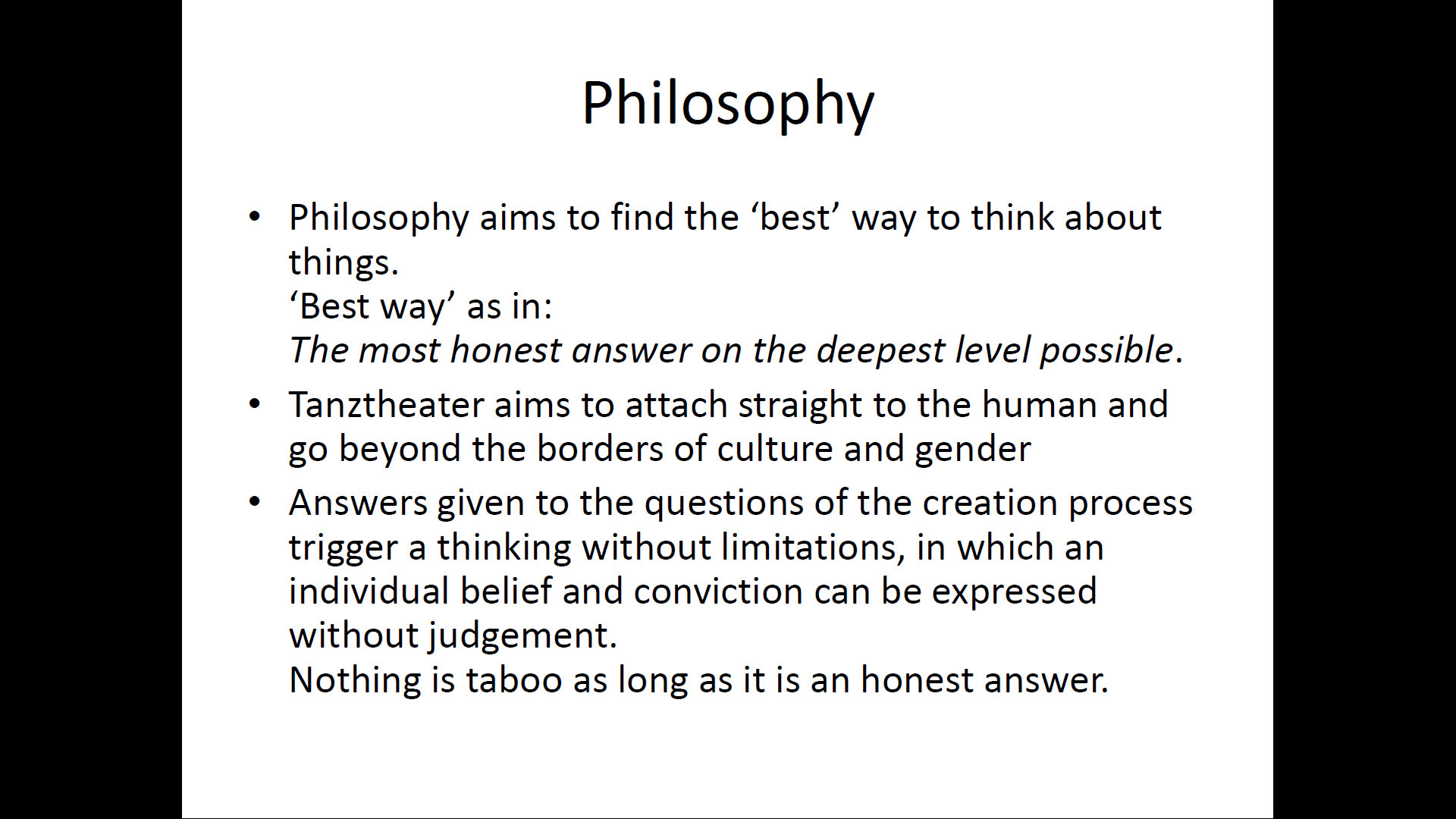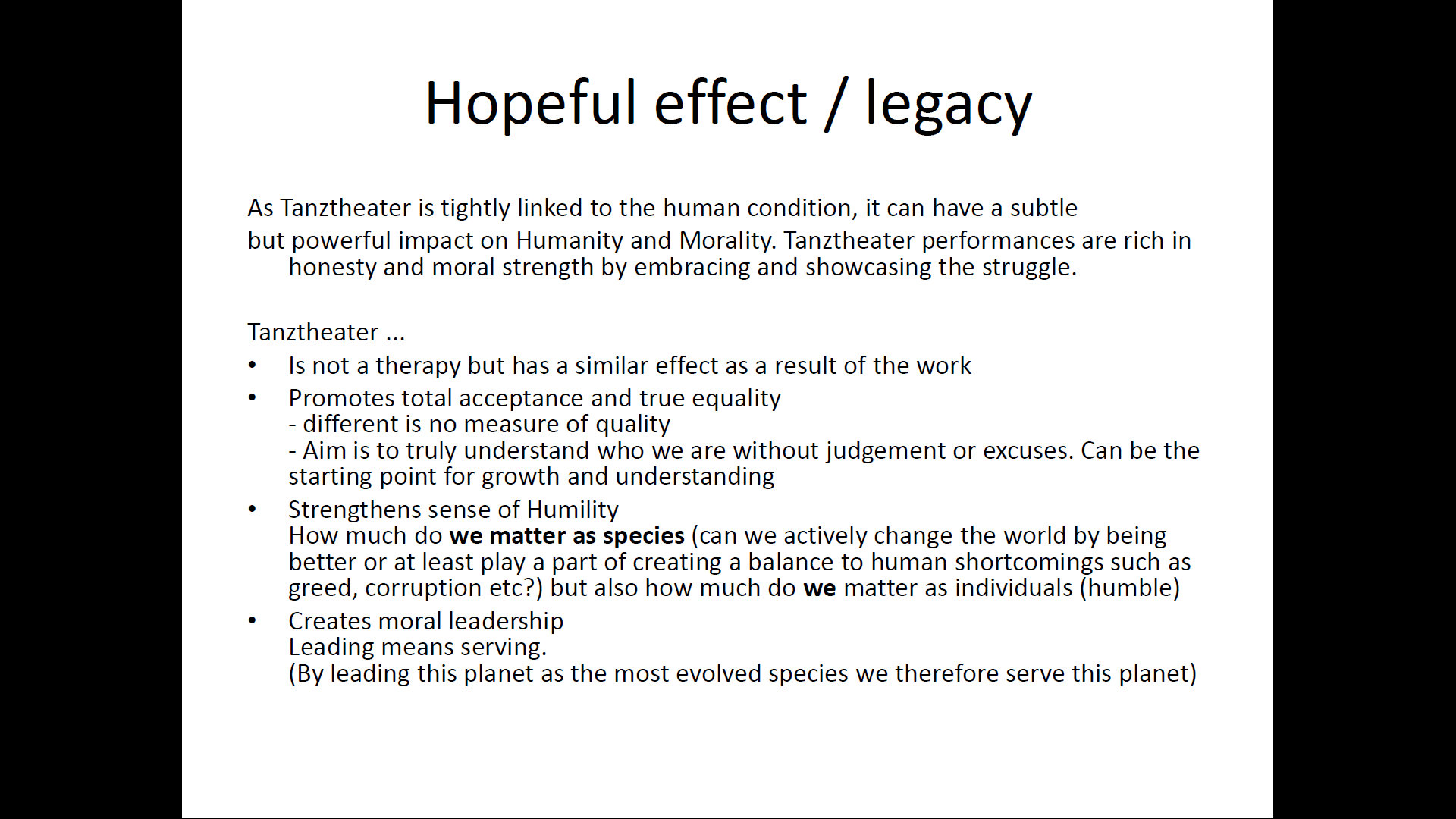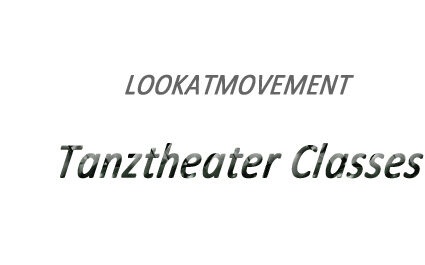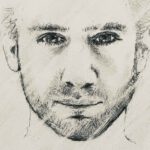By the end of the course you should be able to make sense of all elements of this model:
Component 1
Awareness of Body and Space
In this section we look at what our body is made of and the space that surrounds us.
Understanding the body
Exercise: The curious child.
Body awareness exercise in three stages:
1) Be aware of a body part 2) Explore the functionality of that part and its joint(s) 3) Play
Understanding space
The Mapping Theory
Activating Neurons
Tanztheater specifics
State, Texture and Gestures
State
The Chest is the door to essential expression.
State over context.

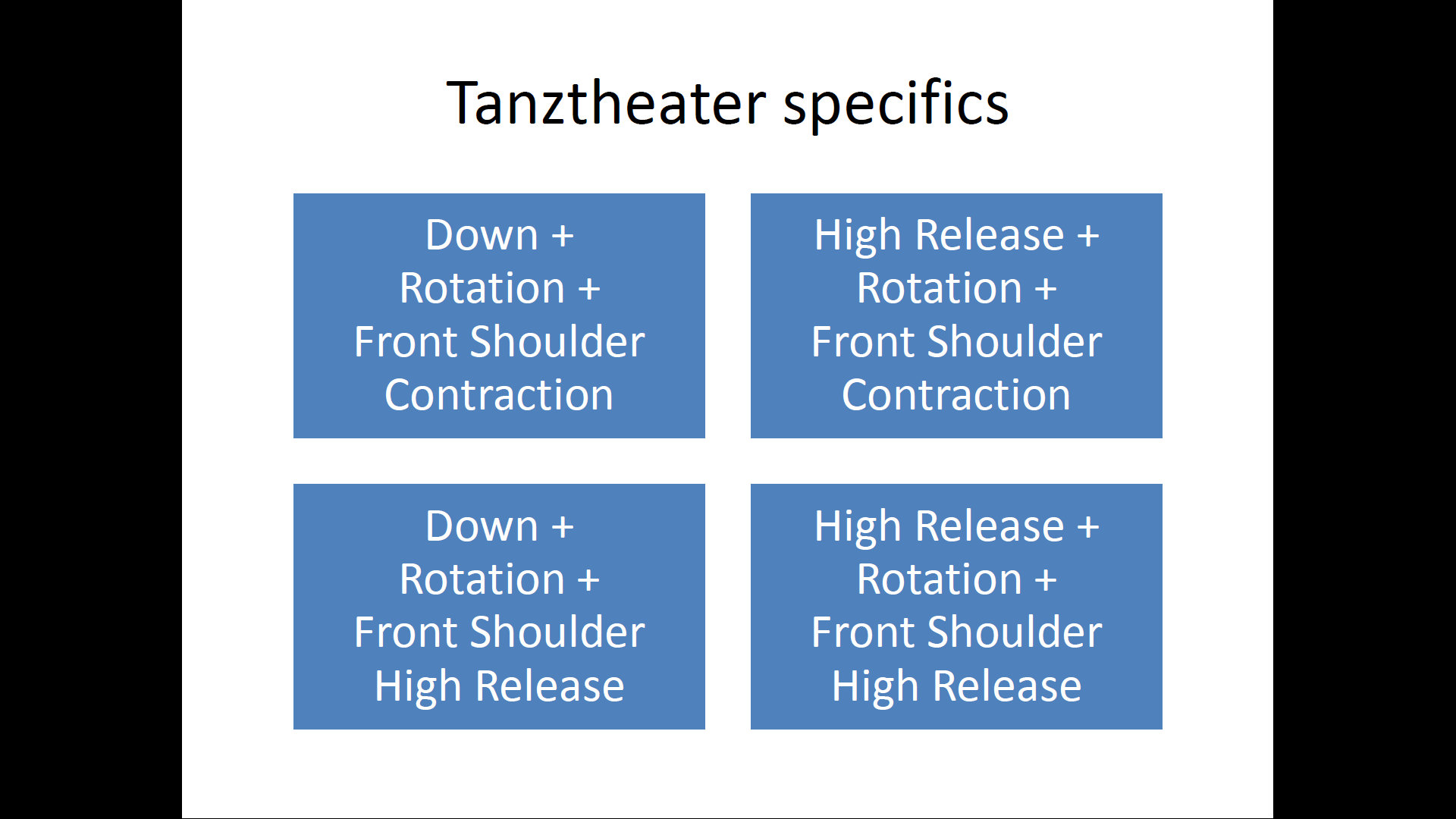
Texture
Three ways of the limbs
Using arms and legs
1) State (Enhancing) 2) Texture (aesthetic) 3) Gesture (language)
Gestures
A language without words
Gestures are used to ‘talk’ about an observation or experience in a refined language enough to convey meaning but not too much to slip into pantomime. 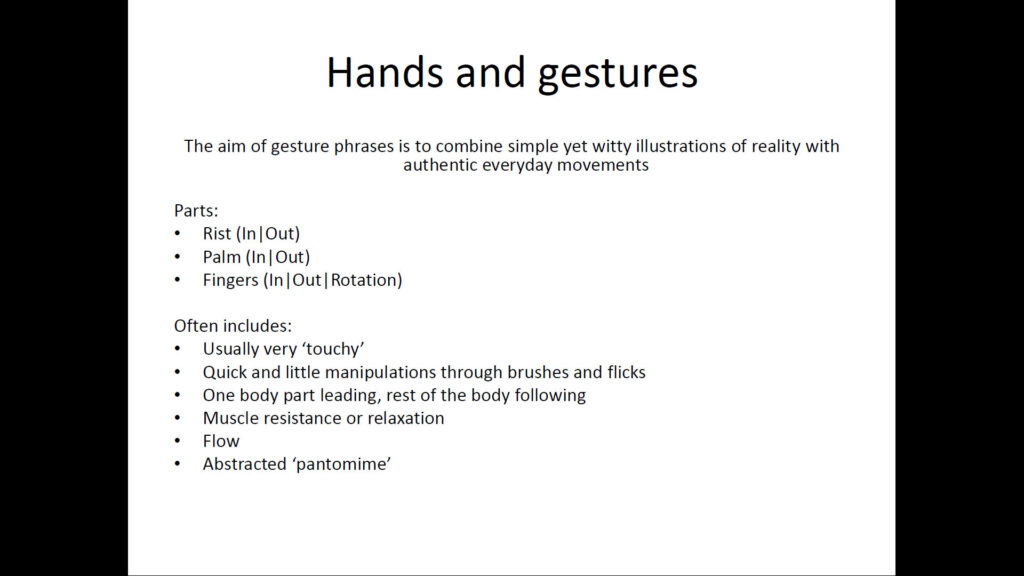
Body Parts
Lines, Points and Surfaces
Lines are usually used to ’slice‘ through the space or swirl the body around
Points are the most direct connection and are used for staccato movements and speed
Surfaces have the most resistance due to their size and make movements slower but more powerful
Levels
For variety and story
Shifting through different levels not only weaves greater variety into a phrase, but also deepens the emotional resonance—evoking mood, place, and feeling with greater clarity and nuance.
There are six levels:
Floor | Hands and feet on the floor | Plié | Standing / Walking | Relevé | Jumping
Dynamics and Principles
The Physicality of Expression
Dynamics are ways of how a movement is done using weight, direction, speed and muscle tension.
Principles are categories that help refine the driving force for a movement and add clarity and precision.
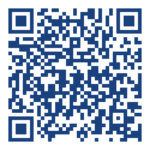 Check out this awesome Tanztheater Generator created by long time student Billy Gigurtsis.
Check out this awesome Tanztheater Generator created by long time student Billy Gigurtsis.
You can select:
- Number of dynamics or principles to generate (item)
- Type of item to generate (dynamic, principle, or both)
- How many principles you want inbetween each dynamic (when type Dynamic and Principles is selected)
- The speak delay (how long in seconds it will wait in between saying each dynamic or principle).
Component 2
Answering Questions
In this section we look at ways to create meaningful and authentic material as a performer.
General introduction:
Performer vs Creator
Friction vs Wisdom
One of the most challenging—yet equally rewarding—aspects of Tanztheater is that the performer often also serves as the creator of much of the movement material.
The illustration below is intended to clarify the distinctions between these two roles.
As a performer, a healthy friction and a willingness to explore the boundaries of an observed area are essential to achieving a powerful and authentic performance quality. The unknown—or the “not yet known”—invites a sense of innocence and spontaneity. This freshness becomes relatable, as the search for meaning places both performer and audience in the same boat, united by a shared curiosity.
As a choreographer, however, it is often beneficial to remain on the outskirts of this metaphorical circle. Keeping a certain distance allows for greater objectivity and a more holistic view of the work as a whole.
That said, the performer should periodically step outside the circle to gain perspective and avoid being overwhelmed by the potentially numbing intensity of an emotionally inward journey. Likewise, the choreographer should occasionally step inside the circle—to experience states firsthand or to demonstrate—ensuring a grounded, empathetic connection to the material.
General tools
Why, what and how?
The social context of Tanztheater, the connection of words and movements and how thoughts can aid true embodiment.
The Essence Filter
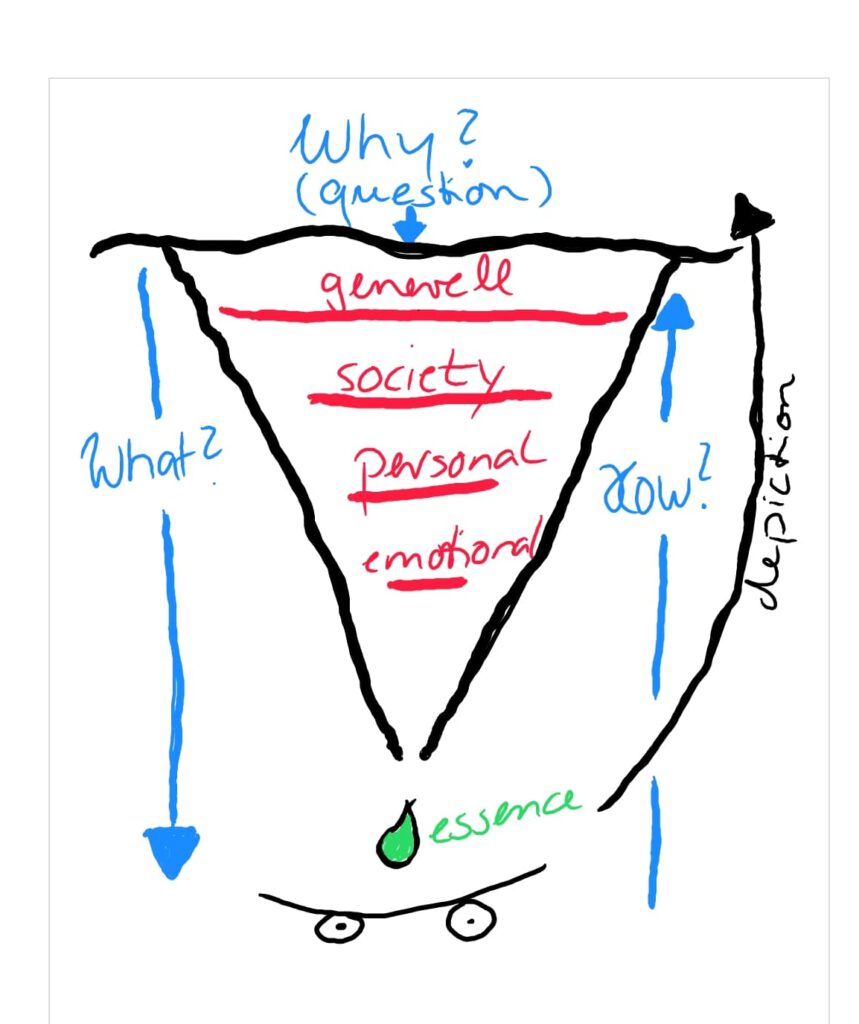
Area 1
Body Improvisation
1) Three to five ways to …
This tool is used to search deep and get various different versions of the same task / action.
2) Include XYZ into one phrase
This tool is used to search wide and create a versatile representation of the big three lenses:
Confusion | Contradiction | Friction
3) Express a state
This tool is used to use the freedom of a simple expression of a physical, mental or emotional state. Here we can use anything as inspiration from images, poetry or other written words.
Dixit Cards as inspiration to express a state
Scan QR code for more pictures or click link here: Dixit Cards
Area 2
The Immaterial
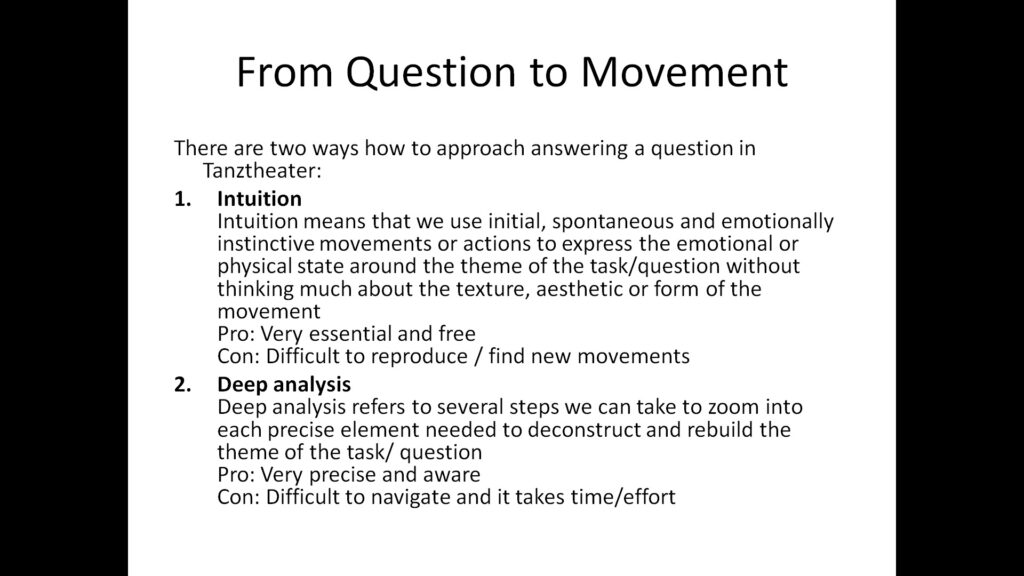
Component 3
The Creator / Choreographer
In this section we will look into the decisions we have to make and tools we can use from a choreographer or creator perspective.
We will start by combining all components so far into one System for Creation.
Generating questions
Now we turn our attention to how to craft questions that spark authentic and compelling movement material—questions that activate the system in intentional ways, depending on the desired effect. This includes understanding when to engage specific areas of the system and how the elements of authenticity, control, and technique interact.
In Tanztheater, the most effective questions are often those that don’t immediately “make sense.” Their ambiguity invites the performer to actively position themselves in relation to the question and respond with honesty. We’re not looking for “good answers”—those that play it safe or stay on the surface—but rather for deeply authentic responses that reveal something essential.
For this to happen, the question must create an opening: an entry point for the performer to connect the inquiry to a broader theme, embody a distinct state, and articulate it through a clear, personal example.
Component 4
The Bigger Picture
In the final section, we explore key elements that Tanztheater gravitates toward—tools it uses to evoke its distinct atmosphere and to speak about human nature in a way that is both deeply empathetic and unflinchingly honest.
We will examine the role of:
Aesthetic | Use of Text | Music | Props
Philosophy | Psychology | Social Science
Summary
Now is the time to gather every element we’ve explored and begin to apply them with intention.
Tanztheater does not move in straight lines – its nature is cyclical, layered, alive. To truly reflect its essence,
we turn to a circular model.
This model moves in two ways:
You can journey alongside one circle, point by point, or dive in- and outward, looking at each layer to reach a deeper understanding of the interconnectedness.
At the centre lies the Core – where Philosophy, Psychology, Social Science, and Legacy converge.
Everything in between becomes a tool – not just for structure, but for truth.
Each piece exists to strengthen and challenge the Core. This process of constant refinement creates a dignified and engaging expression as honestly and authentically as possible.

